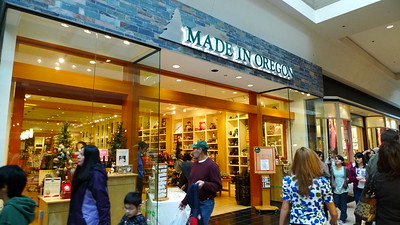 Job growth in Portland Metro was steady throughout summer of 2021. By August, concern over the COVID-19 Delta Variant caused employment to plateau.
Job growth in Portland Metro was steady throughout summer of 2021. By August, concern over the COVID-19 Delta Variant caused employment to plateau.
While employment has not reached the pre-pandemic peak, Portland Metro added 16,400 jobs between June 2020 and June 2021. The September 2021 unemployment rate is the lowest it’s been in the past seventeen months.
The growth was not uniform across all economic sectors. Retail employs ten percent of all workers in Portland Metro but represents twelve percent of all initial unemployment claims since the beginning of the economic crisis. During that period, more than 84,700 initial unemployment claims have been filed by Retail workers in Oregon, including 26,800 in Portland Metro. (Table 1) This represents thirty-six percent of the 2019 workforce.
In September 2021, there were 2,900 fewer Retail jobs in the Portland MSA than there had been in September 2019. (Table 2) Job losses were spread throughout the industry. Of the three hundred thirty-nine occupations included in Retail Trade, two hundred and one employed fewer workers in 2021 than in 2019. Two of the three largest occupations, Retail Salespersons and Cashiers, experienced losses of twelve percent, and six percent, respectively. The third, Stockers and Order Fillers experienced growth of ten percent. (Table 3)
Two of the Retail Trade subcategories, Food and Beverage Stores and General Merchandise Stores employed more workers in September 2021 than in September 2019. The other two, Motor Vehicle and Parts Dealers and Clothing and Accessories Stores employed fewer workers.
More than a year after the pandemic began, demand for workers has returned. Between August and September, job postings for seven of the top ten Retail Trade occupations were up between twenty-one and one hundred and twenty-one percent from the same period during the previous year. (Table 4)
In 2019, more than 75,000 people in Multnomah and Washington Counties were employed in Retail Trade. The sector includes more than 300 occupations. Two of them, cashiers and retail salespeople employ more than 10,00 people each. Together, they account for 40 percent of the industry’s total workforce. (Table 4)
Most Retail jobs are low wage. Slightly more than half of the industry’s jobs have median wages at or below the 25th percentile of the area’s median wage ($15.07/hr.). Just thirteen percent of Retail Trade jobs in Portland Metro have median wages above the region’s median wage ($21.80/hr). (Table 5)
Nearly ninety percent of jobs in retail trade do not require formal education beyond a high school diploma. A handful of occupations (4%) require a post-secondary credential or an associate degree. Seven percent of retail trade jobs require a bachelor’s degree or more. (Table 6)
Workers in this sector tend to be younger than the total workforce. In 2021, forty-five percent of Retail Trade workers were 14-34 years old, compared to thirty-four percent of all workers in Portland Metro. (Table 7) Hispanic or Latino workers are slightly overrepresented in this sector. (Table 8) Just over half of retail workers are men (52%).
With 75,084 jobs and a payroll of $3.1 billion (2019), Retail Trade accounts for nine percent of Portland Metro’s private-sector employment and 5 percent of payroll. Annual wages averaged $41,700, thirty percent less than the average across all industries.

